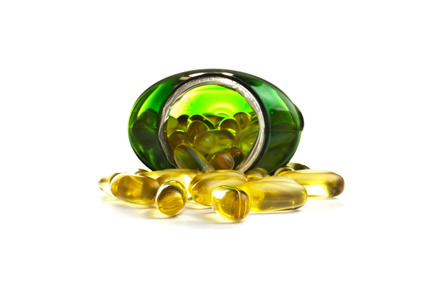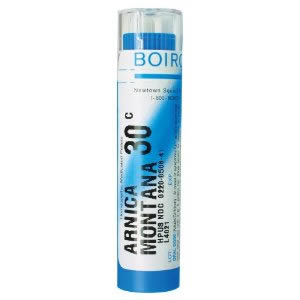Shark Liver Oil is extracted from the livers of deep-water sharks which usually inhabit the cold, non-polluted waters of the sea. Shark liver oil contains a number of substances including alkylglycerol, squalene and squalamine. Alkoxyglycerols is the main active component in shark liver oil. Alkoxyglycerols in mother’s milk is the vital substance that provides infants with protection and immunity against infection as it helps in the continued development of their immune system.
Shark Liver Oil Medical Effects and Benefits
In 1922, 2 Japanese scientist discovered AKGs (alkylglycerols) in sharks caught in the deep unpolluted waters off New Zealand. Later Scandinavian scientists Dr. Astrid Brohult and his wife Professor Sven Brohult discovered that individuals with weak immune systems became resistant to infection after taking alkyglycerols. Other researches performed by scientists, have shown that shark liver oil stimulates the immune system by increasing the production of white blood cells to the normal level and encouraging growth of antibodies.
Alkylglycerols
 Alkylglycerols assist the stem cells in their production of blood, and help strengthen the healthful cells of the body. First clinical use was for treating leukemias, and later to avoid radiation sickness from cancer x-ray treatment. Researcher and physician Astrid Brohult was a Swedish oncologist working with leukemia patients in a children’s hospital. She believed shark liver oil enhanced the number of white cells for people being treated by radiation, had an inhibitory property on the growth of tumor cells, and decreased radiation injuries. Although the results were inconsistent, some of her patients quickly experienced important developments, including a normalization of white blood cell counts and a striking return of energy. Dr. Astrid Brohult and other researchers continued to study AKGs (alkylglycerols) and quickly proved that they inhibit cancer proliferation and avoid radiation sickness. In a study demonstrated that those without alkylglycerols had a 52.1 % injury rate from radiation therapy and those with alkylglycerols had just a 26.3 % injury rate. A study of 100 cancer patients demonstrated that 75 %of them had an increased white blood count despite going through radiation therapy, 15 % had no change, and 10 % had a decrease. In the Proceedings of the American Meeting of Cancer Research in 1992 it was reported that leukemia avoids the immune system from properly forming white blood cells, however, with this oil they seem to “mature” to a proper form more readily. In a study that working with tumor cultures taken from nine patients, we examined the sensitivity of tumor cells to the effect of alkylglycerols by themselves and in conjunction with chemotherapeutic agents. We found that in all of the patient cultures tested, alkylglycerols enhance the effectiveness of chemotherapy. In 6 patients the cancer cell counts decreased dramatically, with over 90 %of the tumor eradicated; 3 people demonstrated increases in sensitivity to the chemotherapy.
Alkylglycerols assist the stem cells in their production of blood, and help strengthen the healthful cells of the body. First clinical use was for treating leukemias, and later to avoid radiation sickness from cancer x-ray treatment. Researcher and physician Astrid Brohult was a Swedish oncologist working with leukemia patients in a children’s hospital. She believed shark liver oil enhanced the number of white cells for people being treated by radiation, had an inhibitory property on the growth of tumor cells, and decreased radiation injuries. Although the results were inconsistent, some of her patients quickly experienced important developments, including a normalization of white blood cell counts and a striking return of energy. Dr. Astrid Brohult and other researchers continued to study AKGs (alkylglycerols) and quickly proved that they inhibit cancer proliferation and avoid radiation sickness. In a study demonstrated that those without alkylglycerols had a 52.1 % injury rate from radiation therapy and those with alkylglycerols had just a 26.3 % injury rate. A study of 100 cancer patients demonstrated that 75 %of them had an increased white blood count despite going through radiation therapy, 15 % had no change, and 10 % had a decrease. In the Proceedings of the American Meeting of Cancer Research in 1992 it was reported that leukemia avoids the immune system from properly forming white blood cells, however, with this oil they seem to “mature” to a proper form more readily. In a study that working with tumor cultures taken from nine patients, we examined the sensitivity of tumor cells to the effect of alkylglycerols by themselves and in conjunction with chemotherapeutic agents. We found that in all of the patient cultures tested, alkylglycerols enhance the effectiveness of chemotherapy. In 6 patients the cancer cell counts decreased dramatically, with over 90 %of the tumor eradicated; 3 people demonstrated increases in sensitivity to the chemotherapy.
The Alkylglycerols (AKGs) found in shark liver oil showed the activity to stimulate macrophages to more effectively destroy, consume, and breakdown germs and damaged cells while strengthening the walls of healthy cells. High doses of AKGs help macrophages participate in a cancer killing mechanism, which enable the macrophages to bind to antibodies on the surface of cancer cells, engulfing and destroying them. The researches to examine the effectiveness of alkylglycerols were done by Scandinavian scientists in the 1970s and 1980s. In a study reported in the “Journal of Cell Physiology“, scientists investigated the cell differentiation-promoting effect of a specific type of alkylglycerols on human colon cancer cells. Therapy with alkylglycerols resulted in a decrease of cellular proliferation and a reduced capacity for cellular invasion. New researches showed that the activation of protein kinase C, an essential step in cell proliferation, can be inhibited by alkylglycerols. Alkylglycerols, by stimulating immune system cells called macrophages, which consume invading germs and damaged cells; and by inhibiting protein kinase C, which is a key regulator of cell growth.
Alkylglycerols directly strengthen the immune system by stimulating production of white blood cells called neutrophils and by activating macrophages. The scientific researches supports the use of 100-150 mg of AKGs daily for general immune system enhancement. A 2005 study conducted in Poland found that shark liver oil during standart therapy can help stimulate the immune system to fight infections better.
Alkoxyglycerols are found in important levels in human breast milk and in the blood-forming organs such as the bone marrow, liver, and spleen. Are a group of 3 natural substances which are involved in the production and stimulation of white blood cells in bone marrow. Mother’s milk contains 33.8% of alkylglycerols, the same type found in shark liver oil, but the percentage of alkylglycerols in shark liver oil is 59.4%. These compounds are especially rich in the colostrum produced for a few days after birth. In animal-based studies, dietary alkoxyglycerols have been shown to be transferred from the blood and secreted intact into both colostrum and milk, which in turn, leads to measurable support of immune system components such as the macrophages.
Squalene
Squalene is a derivative of shark liver. Shark liver oil includes 40 % or more of squalene. (Olive oil includes squalene in concentration of 0.4 – 0.7 %). Lab experiments on animals and human cancer cells confirms squalene’s cancer-fighting activities. Deep-sea sharks have immunity to certain forms of cancer. Sharks have showed the capability to heal their wounds rapidly. In researches performed at the “Smithsonian Institution” in recent years just one malignant tumor was found in over 25,000 sharks. In these sharks squalene disrupts the growth of specific proteins responsible for cell replication in cancer cells. A research reported in the journal “Cancer Epidemiology, Biomarkers, and Prevention” in Dec 1997 found that squalene may be responsible for disrupting the DNA synthesis sequence that causes cancer cells to grow. In a animal-based study found that a 1% squalene diet lessen a certain type of colon cancer foci by 46%.
Squalene is used in flu vaccines in european countries to help enhance the immune system. The World Health Organization reports that squalene has been used in vaccines since 1997, due to its activity to enhance the body’s natural auto-immune response. Squalene is combined with a surfactant to make an emulsion used as an adjuvant in vaccines. Since 1997, an influenza vaccine (FLUAD, Chiron) which includes approximately 10 mg of squalene per dose, has been approved in health agencies in several European countries. (Squalene by itself is not an adjuvant, however,emulsions of squalene with surfactants do enhance the immune response)
Squalamine
Squalamine is predominantly found in the liver tissue of the deep water shark. When it was discovered in 1993, the compound was reported to exhibit broad-spectrum antibiotic activity. Squalamine shows antiangiogenic activity. Angiogenesis is a function in the body where unwholesome cells develop, their own blood vessel structure in order to nourish and support themselves. Increases the cytotoxicity of chemotherapy medications by promoting tumor cell apoptosis and by decreased angiogenesis. In addition, squalamine showed bactericidal and fungicidal activity and increases the bactericidal effects when used in combination with antibiotic drugs. Laboratory experiments revealed squalamine is also a good antiviral candidate, killing a broad spectrum of human and animal viruses. Researches shows squalamine disrupts the membrane interactions necessary for viral replication. In tissue cultures, squalamine was shown to inhibit the infection of blood vessel cells by the dengue virus, and human liver cells by hepatitis B and D.
 L-arginine is a precursor of different compounds (spermidine, spermine and putrescine) that are thought to play a role in sperm motility. A normal semen sample should have a volume of 1.5-5.0 ml, with greater than 20million sperm/ml. L-arginine is an amino acid necessary in the replication of cells, and is considered substantial for male fertility. Researches have shown arginine improves sperm count and motility. For infertile men with sperm counts greater than 10 million per milliliter, some physicians recommend up to 4 g of arginine per day for several months. In 1973, researchers reported a study in which L-arginine was given to 178 men with low sperm count. 74% of the participants had significant development in sperm count and motility after taking 4 g/day for 3 months. Another study, researchers evaluated the clinical efficacy of L-arginine in 40 infertile men. Participants were given 80 ml of a 10-percent arginine HCl solution for 6 months. L-arginine supplement significantly developed sperm motility without any adverse effects.
L-arginine is a precursor of different compounds (spermidine, spermine and putrescine) that are thought to play a role in sperm motility. A normal semen sample should have a volume of 1.5-5.0 ml, with greater than 20million sperm/ml. L-arginine is an amino acid necessary in the replication of cells, and is considered substantial for male fertility. Researches have shown arginine improves sperm count and motility. For infertile men with sperm counts greater than 10 million per milliliter, some physicians recommend up to 4 g of arginine per day for several months. In 1973, researchers reported a study in which L-arginine was given to 178 men with low sperm count. 74% of the participants had significant development in sperm count and motility after taking 4 g/day for 3 months. Another study, researchers evaluated the clinical efficacy of L-arginine in 40 infertile men. Participants were given 80 ml of a 10-percent arginine HCl solution for 6 months. L-arginine supplement significantly developed sperm motility without any adverse effects. sugar control. At least 3 different constituents in have been reported to have hypoglycemic.
sugar control. At least 3 different constituents in have been reported to have hypoglycemic.  advanced age-related macular degeneration. A 2009 National Eye Institute study that used data obtained from the Age-Related Eye Disease Study found individuals who reported the highest level of omega-3 fatty acids in their diet were 30 % lower probably than their peers to develop macular degeneration during a 12-year period. Findings of several studies, including one reported in the Feb 2001 edition of the American Journal of Clinical Nutrition indicate that eating high amounts of omega-3 fatty acids may help promote macular health. Researches also show that omega-3 fatty acids can help lessen dry eye syndrome, a chronic eye disease caused by a reduce in tear production or increase in tear evaporation.
advanced age-related macular degeneration. A 2009 National Eye Institute study that used data obtained from the Age-Related Eye Disease Study found individuals who reported the highest level of omega-3 fatty acids in their diet were 30 % lower probably than their peers to develop macular degeneration during a 12-year period. Findings of several studies, including one reported in the Feb 2001 edition of the American Journal of Clinical Nutrition indicate that eating high amounts of omega-3 fatty acids may help promote macular health. Researches also show that omega-3 fatty acids can help lessen dry eye syndrome, a chronic eye disease caused by a reduce in tear production or increase in tear evaporation. The enzymes MMP1 and MMP13 are thought to play a important role in the cartilage and joint destruction and inflammation seen in rheumatoid arthritis and osteoarthritis. A laboratory experiment showed that a tincture prepared from arnica flowers and aqueous ethanol suppressed MMP1 (collagenase-1) and interstitial collagenase-13 (MMP13) mRNA levels in human articular chondrocytes. In a study, reported in the April 2007 issue of “Rheumatology International“, found that topical preparations of arnica montana were equivalent to ibuprofen drug in providing pain relief to sufferers of hand osteoarthritis. Participants were randomized to receive 5 percent topical ibuprofen or arnica gel three times daily for three weeks. (Patients could use acetaminophen if pain was unbearable). As a result, arnica was comparable in effect to ibuprofen with respect to hand functional capacity, pain intensity, number of painful joints, duration and severity of morning stiffness, and acetaminophen drug intake.
The enzymes MMP1 and MMP13 are thought to play a important role in the cartilage and joint destruction and inflammation seen in rheumatoid arthritis and osteoarthritis. A laboratory experiment showed that a tincture prepared from arnica flowers and aqueous ethanol suppressed MMP1 (collagenase-1) and interstitial collagenase-13 (MMP13) mRNA levels in human articular chondrocytes. In a study, reported in the April 2007 issue of “Rheumatology International“, found that topical preparations of arnica montana were equivalent to ibuprofen drug in providing pain relief to sufferers of hand osteoarthritis. Participants were randomized to receive 5 percent topical ibuprofen or arnica gel three times daily for three weeks. (Patients could use acetaminophen if pain was unbearable). As a result, arnica was comparable in effect to ibuprofen with respect to hand functional capacity, pain intensity, number of painful joints, duration and severity of morning stiffness, and acetaminophen drug intake.